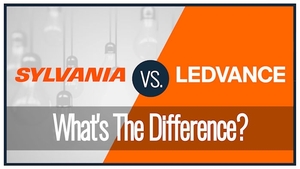LED light bulbs are the most energy efficient and cost saving lighting option, and that’s why they are rapidly becoming the industry’s most competitive bulb.
Why LEDs Deserve Their Rapidly Acquired Popularity

LED bulbs are proof that we have just scratched the surface of lighting innovation. LEDs, or light-emitting diodes, are relatively new on the scene; they’ve been around for just over fifty years. Yet, in their short time on the market they’ve totally altered the industry.
Luminous Efficacy: Where LED Bulbs Truly Shine
And that’s because the literal way that they light our lives is different. The measurement of a light source’s ability to produce visible light is called luminous efficacy. Luminous efficacy relates specifically to how much visible light a light source can provide from a single watt of energy. Essentially, luminous efficacy is the way the lighting industry measures how well a bulb is doing its job.
A lumen is a unit of luminous (light) power. It’s projected that by 2020, LED light bulbs will be able to produce 150 lumens per watt. One needs only to compare that number to a CFL’s 55-70 lumens per watt, or an incandescent bulb’s 13-18 lumens per watt to understand how completely game-changing that number is.
If you consider the finer details of LED light bulbs, it’s easy to see that they’re game changers for a number of reasons.
This isn’t the bulb you know
When scientist Nick Holonyak, Jr., invented the first LED in 1962, he wasn’t actually trying to find a replacement for the incandescent bulbs that dominated the market. Instead, he was trying to make a laser. It seems the fact that he was considering the task from a completely different angle, totally paid off.
Because LED light bulbs are a different animal, and those differences have allowed them to stand head and shoulders above their competitors in terms of both luminous efficacy and energy efficiency.

Here are some key differences, as outlined by the Department of Energy, between the way that LEDs bulbs differ from other common forms of lighting:
- LEDs are the size of a fleck of pepper, and a mixture of red, blue, and green typically create the source of white light.
- LEDs emit light in a specific direction. Other lighting types rely on reflectors and diffusors to trap and direct light in the appropriate direction. As much as half of the light created by other types of bulbs never leaves the fixture.
- LEDs do not emit high levels of heat in comparison with CFLs and incandescent bulbs, which release 80-90 percent of their energy via heat.
Because LEDs are so distinct from the other bulbs on the market, they truly require that consumers reorient what they believe to be non-negotiable about their lighting options.
Philips Lightbulbs are Cool--Literally

Virtually all of the greatest weaknesses of incandescent bulbs are solved by the use of LED bulbs. While incandescent and CFL bulbs still lead in sales, a relatively brief look at the positive aspects of LEDs will make it clear why they’re well on their way to becoming the market standard.
We have the benefit of living in a time when LEDs can take on the shape and the job of the most traditionally shaped bulbs all the way to the utilitarian tube bulb. By looking at the models offered by Philips brand alone, it becomes clear that this isn’t just a matter of fresh technology. Rather, LEDs have been adapted to replace virtually any light bulb you may be using.
CFL vs LED: Lightbulbs Compared Side by Side

When a Philips LED lightbulb is in use 95 percent of the energy exerted is actually used for light, while only five percent is wasted on heat. With compact fluorescent lights, the opposite is true: they convert five percent to light and the other 95 percent is wasted on heat production. That means LEDs are also safer, since they’re less likely to result in burns or combustion.
Not only that, but they need less energy to operate as well. Generally, a 36 watt LED bulb can produce the same amount of light as an 84 watt fluorescent bulb. Which of course supports the idea that LEDs’ luminous efficacy is far superior to other bulbs.
Additionally, for those very reasons, according to Julia Layton at HowStuffWorks, “The annual CO2 reduction is in the hundreds of pounds for a single lamp.”
Philips LEDs typically last four times longer than CFLs and a whopping 25 times longer than an incandescent light bulb. And instead of being constructed from glass, they’re made from epoxy lenses and are far less likely to break, again, making them the champion of sustainability and longevity.
As we’ve noted before, “The pinnacle of energy-efficient lighting is the LED bulb.”
LED Lightbulbs’ Benefits Outweigh Cost
In the beginning of the LED light bulbs’ career, they were far too expensive to be considered an option for the everyday consumer. However, the cost has fallen by more than 85 percent.
For the family hoping to use them in their home, not only is the price reasonable, but there are workable bulbs for virtually every room of a home. Whether it be bulbs or tubes, Philips provides smart options that can also be utilized not just in residential homes, but in business and office spaces as well.
At the outset, an LED bulb will typically cost several dollars more than a comparable incandescent light bulb. However, the fact that a Philips’ LED bulb installed in a baby’s nursery will still be doing it’s job, and doing it well, when that child graduates from college, coupled with the distinct difference in energy consumption, means that over the long haul the LED is second to none even in terms of price.

For any user of modern lighting looking for the best combination of both energy efficiency and cost saving measures, the clear answer will inevitably be the Philips LED light bulb from LightBulbs.com.





